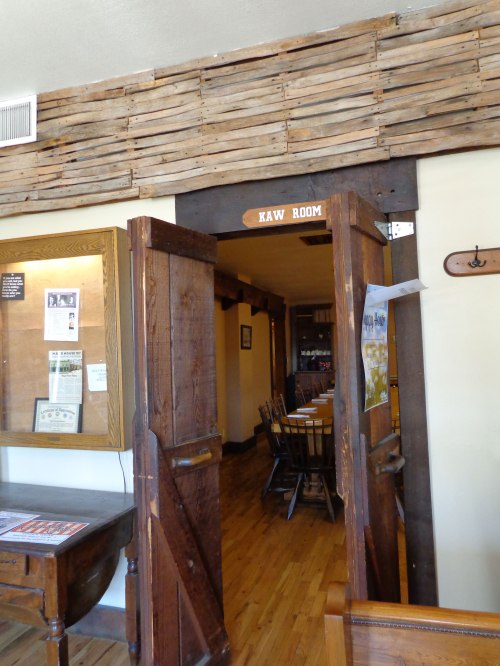I’d stopped in Topeka en route to Wichita at the urging of a friend who grew up nearby. I had not originally planned on this stop, but my friend said two things were absolutely worth seeing: the Kansas Museum of History and the Kansas State Capitol. So I wedged another half day into to my driving plan—and I was pleased that I did. I definitely agree that my friend’s choices were outstanding.
The museum was first. What seemed like a relatively small temporary exhibit took a surprising amount of time, as it offered a remarkable amount of history. For each of the 105 counties of Kansas, there was a story of a significant event or person, as well as some background on the county. For example, the death in 1872 of Horace Greeley, founder of the New York Tribune, probably influenced the naming of the counties of Horace, Greeley, and Tribune—primarily because he was a noted abolitionist, which was an important cause in Kansas.
That was a fun bit of information, but most of the counties were represented by historic firsts, remarkable discoveries, or important events. For example, Sumner county gave women the vote in 1887. Soon thereafter, the Quaker town of Argonia in Sumner County elected Susanna Madora Salter the first woman mayor in the United States.
Dr. Brewster Higley, who lived in Smith County, was probably a good doctor, but he is best known for a poem he published in 1872 titled “My Western Home.” Friend Daniel Kelley set the poem to music, and it became widely known as “Home on the Range,” now the state song of Kansas.
Chautauqua County’s Alfred Fairfax, who escaped slavery, fought with the Union Army during the Civil War, moved to Kansas, and became the first African American elected to the Kansas legislature.
Lots of other stories, of rough-and-tumble towns, of striking oil, of poets and inn keepers, of Native Americans and African Americans were good reminders that there is almost nowhere you can go that doesn’t have some bit of interesting and even significant history.
And all that was before I even made it into the main part of the museum. And what a great museum it was. Big, impressive displays—such as a full-size tipi, full-size covered wagon, and an actual engine and a few cars from the famed Atchison, Topeka, and Santa Fe train line—make this museum not only educational but, along with all the stuff that can be touched or explored, also very kid friendly. The narrative moves from Native American to early Spanish and French explorers and trappers, to the waves of pioneers that swept in during the mid-1800s, through the Civil War, up to the present. Here’s a photo of just one of the many displays that help connect visitors to the past.
Exploring the museum one encounters a remarkable number of familiar names: Amelia Earhart, Dwight Eisenhower, Fred Harvey, Carrie Nation, plus all those associated with Wichita, from Clyde Cessna to Pizza Hut. Legendary lawmen included “Bat” Masterson, Wyatt Earp, and Wild Bill Hickock. Exhilarating seeing how much “American history” is really “Kansas history.”
I could say more—I have pages of notes—but I’ll leave something for you to discover. To either see more about the museum, or possibly to even plan your own visit, here is their website. https://www.kshs.org/p/kansas-museum-of-history/19578 Impressive place.
The capitol building is splendid—a great, domed edifice that makes it clear that it is to be taken seriously. However, the visit here was primarily to see the famous murals by John Steuart Curry, most notably the once-controversial painting of abolitionist John Brown. I enjoyed touring the impressive capitol building. Then it was time to head for Wichita, which fortunately turned out to be so wonderful that I didn’t feel bad about having only one day in Topeka. Still much more to see in Kansas than I fit in this trip. There needs to be a next time.















